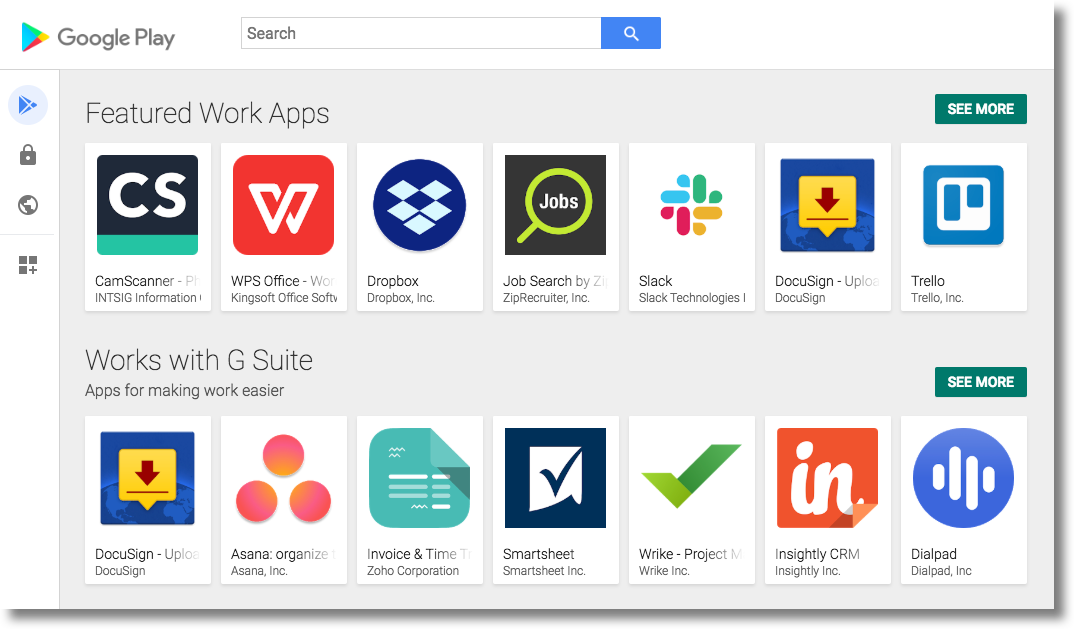Page Summary
-
Android Enterprise is a Google initiative to enable the use of Android devices and apps in the workplace.
-
Work profiles allow for separating work and personal data on both employee-owned and company-owned devices.
-
Fully managed deployments are for company-owned devices used exclusively for work, including dedicated devices locked to specific purposes.
-
An Android Enterprise solution integrates an EMM console, Android Device Policy for applying policies, and Managed Google Play for app management.
-
EMM solutions use Android Enterprise APIs to onboard organizations, provision devices, and manage device and app policies.
Android Enterprise is a Google-led initiative to enable the use of Android devices and apps in the workplace. The program offers APIs and other tools for developers to integrate support for Android into their enterprise mobility management (EMM) solutions. This site provides developers with an overview of the program and the background information required to start building an Android Enterprise solution.
Android devices: management use cases
This section describes the management options available in Android to support managed deployments. You can use Android Enterprise's tools and services to support any or all of the following options in your EMM solution.
Integrate Android into your EMM solution
An Android Enterprise solution is a combination of three components: your EMM console, Android Device Policy, and managed Google Play.
EMM console
EMM solutions typically take the form of an EMM console—a web application you develop that allows IT admins to manage their organization, devices, and apps. To support these functions for Android, you integrate your console with the APIs and UI components provided by Android Enterprise.
Android Device Policy
All Android devices that an organization manages through your EMM console must install Android Device Policy during setup. Android Device Policy is an app supplied by Android that automatically applies the management policies set in your EMM console to devices.
Managed Google Play

Managed Google Play facilitates app management capabilities for Android Enterprise solutions. It combines the familiar user experience and app store features of Google Play with a set of management capabilities designed specifically for organizations.
Managed Google Play can be embedded into your EMM console to provide IT admins with features such as:
- Public app search
- Private app publishing
- Web app publishing
- App organization
On managed devices, managed Google Play is the organization's app store. The interface is similar to Google Play—users can browse apps, view app details, and install them. Unlike the public version of Google Play, users can only install apps from managed Google Play that their organization approves for them.
Android EMM lifecycle features
This section provides an overview of the major features you can integrate into your EMM solution.
Onboard new organizations
Android Enterprise provides APIs and an online setup flow for you to onboard new
organizations. When an organization completes the onboarding process, you create
an Enterprise resource for it.
There are two types of enterprise bindings: managed Google Play Accounts enterprises and managed Google domains.
Provision devices and work profiles
Provisioning is the process of setting up an Android device for management. It typically involves transferring setup details (for example, corporate WiFi credentials) to the device and installing Android Device Policy. For a full list of provisioning methods, see the Feature list.
Manage devices
After a device or work profile is provisioned, it's ready to be managed. Through the Android Management API, Android supports over 80 device and app management policies. Android Device Policy, the management app installed during provisioning, applies policies set in the API to devices:
- When a device or work profile is provisioned, Android Management API assigns it a unique device ID.
- IT admins use an EMM console integrated with Android Management API to configure device and app management policies.
- IT admins assign these policies to specific devices or work profiles (i.e. specific device IDs).
- Android Management API sends the policies to the specified device IDs.
- On each device or work profile, Android Device Policy enforces the policies it receives from Android Management API.
Android Management API and Android Device Policy handle steps 4 and 5 automatically, meaning there's no development effort required to communicate policy settings to devices.
Manage apps
With the managed Google Play iframe, you can support app discovery, private app publishing, web app publishing, and app organization into your EMM console with minimal integration effort.
Android Management API handles app distribution through the policy-based approach described in the Manage devices. The API supports two primary methods of app distribution: adding an app to a device's managed Play store app or remotely push installing an app to a device.
Next: Develop your solution



